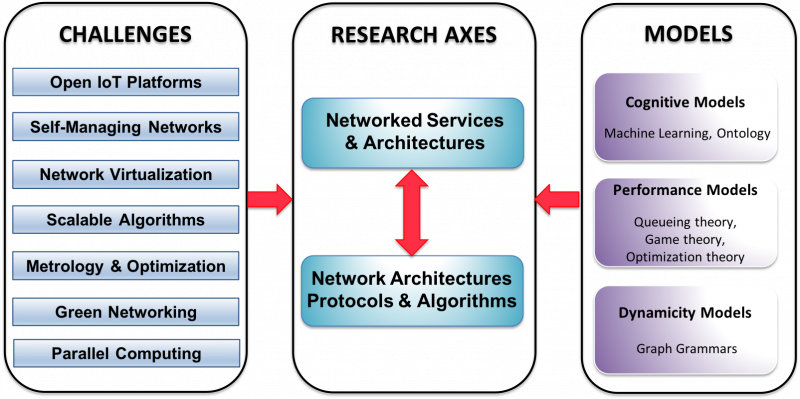Research Topics - SARA
The SARA team's contributions address the following scientific challenges:
Reconfigurable architectures for connected objects: the idea is to devise new approaches enabling to move away from silo-based architectures for open and dynamically reconfigurable architectures hosting multiple context-aware applications.
Autonomous networks and applications: The goal is to design methods enabling networks and applications to manage themselves with minimal direct human intervention and to react autonomously and dynamically to various inevitable anomalies and to fluctuations in demand.
Network virtualization: Our work aims at designing more agile and programmable networks by decoupling network control and forwarding functions and by relying on software implementations of certain network functions.
Scalable algorithms, protocols and services: With the explosive growth in the amount of available data, it is more than ever before essential that network algorithms be scalable (resource allocation, scheduling, service discovery and composition, etc.)
Green networking: According to a number of studies, computing and communication infrastructures consume up to 4 percent of the energy worldwide. Our work aims at developing energy-efficient networking technologies and focuses on the tradeoff between energy consumption and network performance.
Network monitoring and online optimization: our objective is to design new schemes for network monitoring, traffic characterization, but also for measurement-based anomaly detection and online optimization.
Parallel and distributed algorithms: we address major research challenges in the fields of high-performance computing, parallel computing and distributed computing with application to combinatorial optimization and numerical simulation problems.
To address these challenges, the team is organized into two research axes: the first one dealing specifically with networked architectures and services, while the second focuses on distributed algorithms, protocols and network architectures. These two axes are of course in interaction and rely on a number of common theoretical models and tools, such as graph grammars, ontologies, queueing and game theories, machine learning, mathematical optimization, etc.

